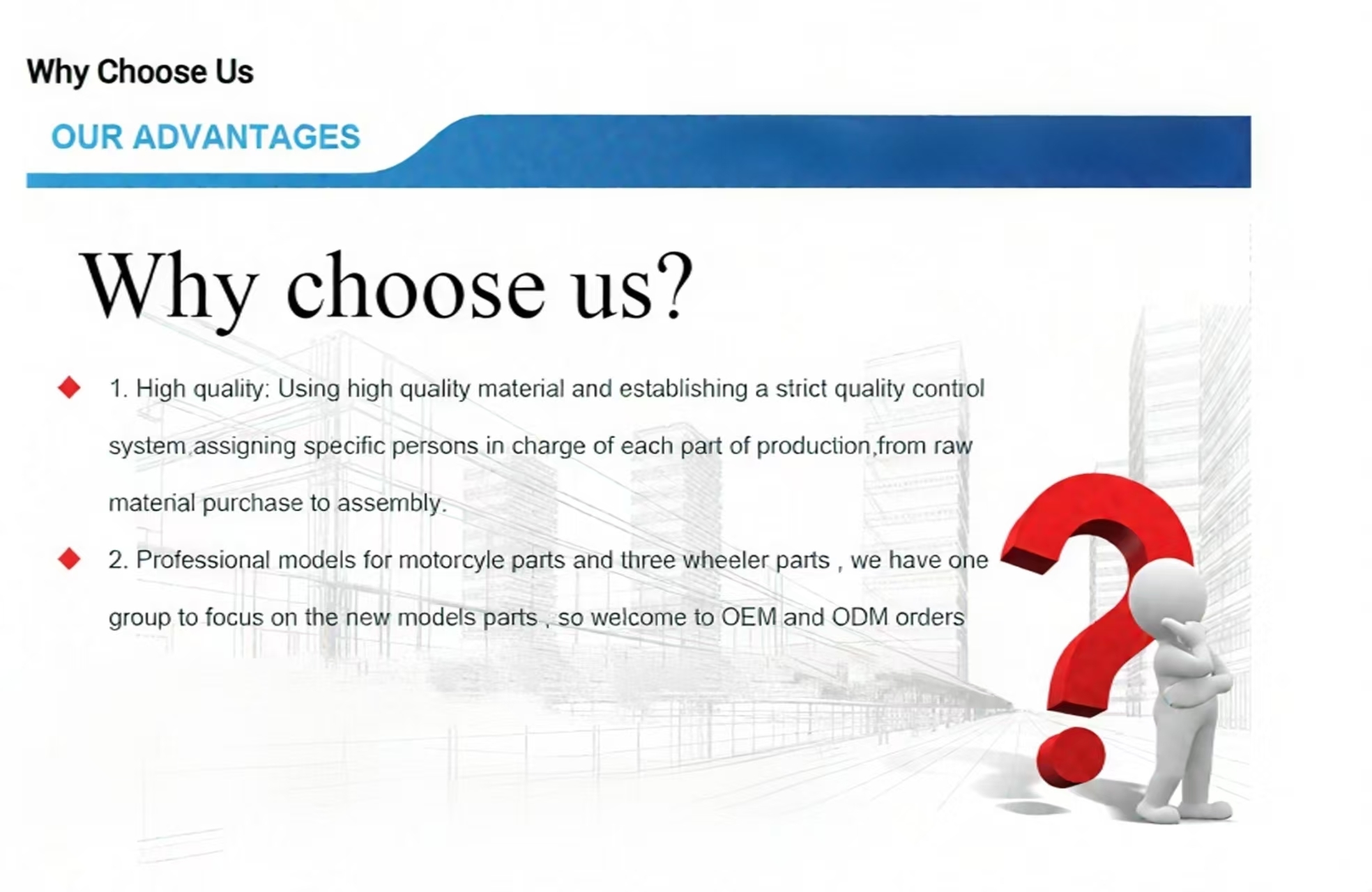| Sign In | Join Free | My frbiz.com |
|
| Sign In | Join Free | My frbiz.com |
|
| Categories | Motorcycle Parts |
|---|---|
| Brand Name: | As Request |
| Model Number: | Bajaj205 |
| Place of Origin: | China |
| MOQ: | 500 |
| Price: | Negotiation |
| Payment Terms: | Negotiation |
| Supply Ability: | Negotiation |
| Delivery Time: | Negotiation |
| Packaging Details: | HACI package. Design paper package. Design plastic package, neutral package |
| Warranty: | 1 year |
| Quality: | High-Quality |
| Material: | Aluminum |
| Packing Terms: | PVC bag & cartons & wooden pallets |
| QC: | 100% Inspection |
| Company Info. |
| HACI COMPANY LIMITED |
| Verified Supplier |
| View Contact Details |
| Product List |
| Place of Origin: China | Brand Name: Customized |
| Certification: ISO9001 | Model Number: BAJAJ205 |
| Supply Ability: 150000pcs per month | Delivery Time: 20-30 work days |
Structural composition
Stator: It is equivalent to the skeleton of the motor. The coil is
wound inside. When powered on, it will generate a rotating magnetic
field, providing a power basis for the rotation of the rotor.
Rotor: It is located inside the stator, usually made of cast
aluminum or cast steel. There are permanent magnets or coils around
the rotor. It is pulled to rotate under the action of the magnetic
field generated by the stator. It is a key component for converting
electrical energy into mechanical energy.
Commutator and carbon brush: There is a circle of copper sheets on
the tip of the rotor shaft, which is the commutator, and the carbon
brush is next to it. The carbon brush introduces the current into
the rotor. As the rotor rotates, the carbon brush slides on the
commutator to ensure that the current direction remains unchanged,
so that the rotor can continue to rotate.

Reduction gear set
Armature shaft: It is connected to the motor rotor, directly
receives power, and transmits the power of the motor to the
subsequent transmission components.
Transmission gear: It is mounted on the armature shaft and meshes
with the reduction gear in the starter. Through the designed
transmission ratio, the high speed and low torque of the motor are
converted into low speed and high torque suitable for driving the
engine.
Drive gear: It usually has a one-way clutch and can only rotate in
one direction. When working, it bites the gear ring on the engine
flywheel, driving the engine crankshaft to rotate together, thereby
starting the engine.

Starter relay and electromagnetic switch
Starter relay: receives the start command from the ignition switch
and controls the high current circuit of the starter. There is a
small electromagnet inside the relay, which closes the switch after
power is turned on and connects the starter circuit.
Electromagnetic switch: installed on the starter, and also has an
electromagnet and movable contacts inside. When the start button is
pressed or the electronic key is used to start, the electromagnet
is energized to close the contact, so that the starter is connected
to the battery and the motor starts to rotate.
Connectors and others
Shell: As the outer shell of the entire starter, it plays a role in
protecting the internal parts, can be dustproof and waterproof, and
ensure that the internal parts of the starter work in a good
environment.
Terminal block: It is a metal part used to connect wires on the
starter, connected to the battery, relay, controller, etc., to
achieve circuit conduction and signal transmission.
Mounting bracket and fixing bolt: used to firmly fix the starter to
the engine or frame of the motorcycle to ensure that the starter
will not move or shake during operation.

Working Principle
When the driver operates the starter lever or presses the start
button, the battery provides electrical energy to the starter
motor. The current enters the DC motor through the electromagnetic
switch, and the stator coil generates a magnetic field, causing the
rotor to start rotating under the action of the magnetic field. The
rotational power of the rotor is transmitted to the reduction gear
set through the armature shaft. After deceleration and torque
increase, the drive gear drives the engine flywheel to rotate, and
then drives the engine crankshaft to rotate. At this time, the
engine piston begins to move up and down, completing the working
cycle of intake, compression, ignition combustion and exhaust, so
that the engine enters the working state. Once the engine starts
and starts to run normally, the starter motor stops working and is
maintained by the engine's own power output.
Function
Starting the engine: This is the most important function of the
motorcycle starter motor, providing the engine with initial
rotational power, so that the engine can overcome internal
resistance and start running, thereby achieving fuel combustion and
power output.
Auxiliary power generation: In some motorcycle designs, the starter
motor can also play an auxiliary power generation role when the
engine is running, converting part of the engine's mechanical
energy into electrical energy to provide power for electrical
equipment on the motorcycle such as lights, horns, and instruments.


Contact way
WhatsApp:0086-19128229045

|